Cosmos is a beautiful plant that has different varieties and colors, which makes it certainly a unique and interesting part of your garden. Now that you decided to get one, it can be a daunting task to treat them well.
Here is some information we’ve gathered about cosmoses as well as tips on how to properly take care of them.
General Information about Cosmos
Scientific name: Cosmos sulphureus
Family: Asteraceae
Native Habitat: Mexico and Central America
Plant Type: Annual plant
Blooming Period: Summer and fall
Sunlight Needs: Direct sunlight every day
Hardiness Zones: USDA 2–11
Soil Type and pH: Well-draining, 6–6.8 pH
Maximum Height: 6 feet
Cosmos are plants native to the plains of Mexico and are members of the sunflower family. Their flowers produce vibrant yet varying colors which makes them among the most popular flowers today.
What type of flower is cosmos?


Cosmos are annual flowers that are a part of the flowering members of the sunflower family.
These plants can survive poor soil conditions and can produce flowers of different colors.
Cosmos prefers dry and warm climates similar to the one in their origin country Mexico. As a result, they are not well-acclimated to winter and can’t survive extreme cold conditions.
Are cosmos easy to take care of?


Cosmos is one of the easiest plants to grow in your garden. They only require to be sown directly to the ground for them to grow, and they are low-maintenance compared to other flower-bearing plants.
Their love for soil that is poor in nutrients and drier than usual makes them really easy to manage because you don’t need to invest in fertilizer and a constant water supply for them to survive.
Getting them to flower isn’t hard either. As long as the soil conditions match their preferences and they are regularly watered, cosmos will bear flowers all throughout the summer and autumn seasons.
Their ability to rapidly produce flowers makes them highly popular among gardeners, as their colorful flowers are highly attractive to pollinating insects like bees and butterflies.
Are Cosmos flowers annual flowers?



Cosmos is among the most popular annual plants to grow thanks to them being easy to plant to maintain. Being an annual flower, cosmos only lasts a year and needs to be re-planted come next spring season.
A good trait of the cosmos for being an annual flower is its ability to bloom flowers throughout the summer and fall seasons. Your garden will certainly look wonderful throughout those seasons thanks to the cosmos.
How long do the cosmos’ bloom last?
Cosmos can bloom all summer long until fall. However, cut flowers placed in a vase will not last longer than 5 days.
You don’t need to worry about cutting too much because cosmoses can rapidly produce flowers each time you cut them.
It is also recommended that you regularly cut their flowers because cosmoses bloom more flowers that way.
As a result, cosmos is among the more popular flowers to add to a bouquet or flower arrangement thanks to the abundant production of its flowers.
Tips on Taking Care of Cosmos
Cosmos can certainly be one of the most beautiful plants for your garden. This colorful and active plant can live for a year, producing the most dazzling flowers you can see.
Thankfully, the Cosmos is not a particularly hard plant to grow and can be grown by even those who are new to plant caretaking and growing. Here are our tips on helping you grow the most beautiful cosmoses for your garden.
Planting the Cosmos Flower



The cosmos is not picky when it comes to soil conditions, being able to survive in USDA zones between 2 and 11. They prefer climates that are dry and warm, which makes them more suited for soil constantly under sunlight.
To plant cosmos in areas with four seasons, it is best to plant their seeds indoors in trays with a light amount of soil for 5 weeks before the start of the spring season.
Once the seeds start to germinate and the chance of frost has passed, you can now begin transferring them to your garden. Make sure to plant them in holes at least 5 inches deep and wide.
Cosmos can grow bushy and thus needs a bit more extra space to grow. Make sure to plant their seeds at least 20 inches apart from each other.
Please take note that direct sowing of seeds to your garden is also possible as long as you do it after the threat of frost has already come to pass.
Pinching Young Cosmos


It is highly recommended that you pinch your newly grown cosmos so as to ensure its healthy stems continue growing well. Pinching is when you remove the node on the stems where the leaves are attached.
When you pinch a young cosmos, you encourage the stem to split off into two new stems. This can result in an adult cosmos that is bushier than normal.
Having more stems naturally results in more places for the flowers to grow. For a more vibrant cosmos, it is best to pinch them after a few weeks after their planting.
Watering Your Cosmos
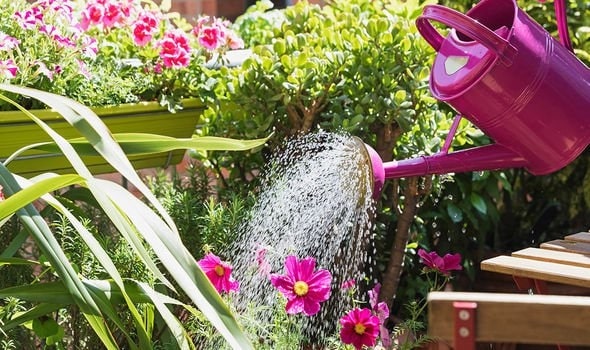

Watering your cosmos shouldn’t be too hard at all. As a plant that is native to the dry plains of Mexico, they are used to only receiving small quantities of water, unlike other plants in your garden.
As long as their soil is moist, then your cosmos will grow beautifully without any issues. Only water them at regular intervals to maintain a stable water level and avoid over-watering.
If your area experiences any drought, then you don’t need to worry about your cosmos too much. These plants are known for being hardy and can survive for long periods on dry soil.
Cosmos Sunlight Exposure: Direct or under Shade?


As part of the sunflower family, cosmos prefers direct sunlight as much as possible. With a healthy dose of sunlight, cosmoses are guaranteed to bloom all throughout the summer and autumn seasons.
However, be wary of any reports of sudden heat waves in your area. Like with many things, moderation is important.
Immediately place a light shade over your cosmos on extremely hot days to prevent them from wilting due to extreme heat.
Do cosmos need fertilizers?
Fertilizers are not recommended for cosmos. Soil rich in nutrients like nitrogen discourages flower growth and also leads your cosmos to produce soft and floppy stems.
Therefore, both natural and artificial fertilizers are not needed when taking care of cosmos. Make sure you pick a spot in your garden that hasn’t been treated yet with too much fertilizer.
Additional Tips and Info for Cosmos Care
Aside from general tips, there is other stuff you need to learn to do more than the necessary care for your cosmos.
Here are some questions and tips we’ve gathered on how to improve your skills in caring for cosmoses to make sure they can produce vibrant flowers for your garden.
Can you grow cosmos in pots?


Yes, it is possible to grow cosmos in pots that are at least 12 inches in diameter. The size of a fully grown cosmos can reach up to 5 feet tall, which means you’ll need a heavy and big pot to support it.
It is also wise to only use pots that have big draining holes in them since an overabundance of water in the pot might kill off your cosmos due to drowning. For best results, try using a potting medium instead of pure garden soil.
Using a Potting Medium for Your Cosmos
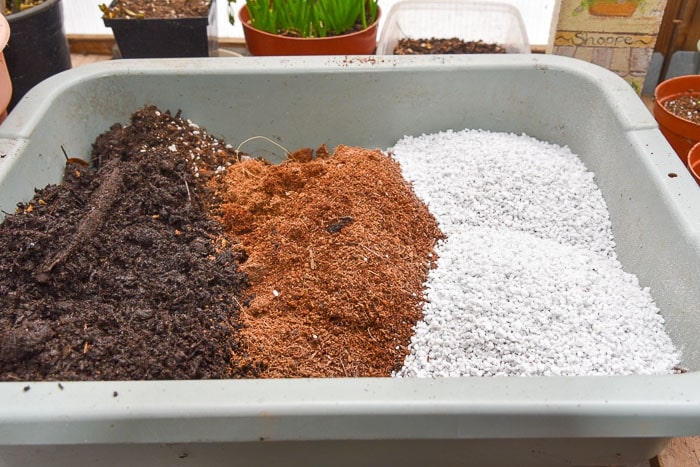

If you decide to grow your cosmos in a pot, it is highly recommended that you use a potting medium.
Unlike regular garden soil, potting mediums allow more water to pass through them, which keeps the water content of your pot low. This is what cosmos plants prefer.
It is possible to buy a potting medium from a gardening store. However, if you prefer to make one yourself, then the mix is easy enough.
Simply mix your garden soil with peat moss and small rocks like perlite and then add them all into the pot.
Do you need to cut back cosmos after blooming?
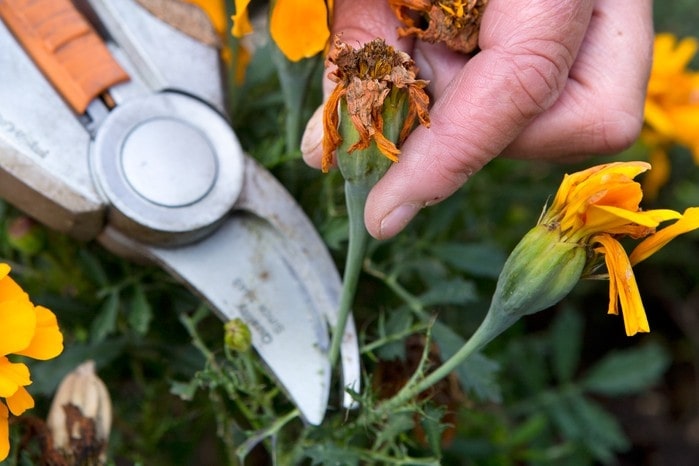

Yes, it is a good idea to regularly cut the flowers or deadhead your cosmos.
For the first bloom, you can remove the flowers only, but for the next cutting, it is better to cut from the flower to at least a third of the stem it’s attached to.
Doing this regularly not only gives you a constant supply of cosmos flowers for your flower arrangements but also encourages the plant itself to grow more and sprout more flowers.
As with most flowering plants, it is wise to always deadhead your cosmos regularly to remove any dying or dried-out flowers and allow new and more flowers to replace them.
Common Pest and Disease Problems with Cosmos
Despite its resilience, cosmos is still no stranger to diseases and pests other plants suffer from. This section covers the most common type of pests and diseases you’ll face when taking care of cosmos and how to deal with them.
Bug Infestation on Your Cosmos
The most common types of bugs that infest cosmos are aphids and Lygus plant bugs.
Dealing with these pests isn’t hard, and with regular inspection, you can always prevent them from destroying your cosmos and infesting other plants in the garden.
Aphids on Cosmos


Aphids are among the most well-known problems a gardener may face. These small insects feed off plant sap and reproduce fast enough to wreak havoc on most plants if left unchecked.
Because they feast on plant sap, they can impede plant growth, as not enough nutrients reach the leaves and stems of the plant.
Treatment: Thankfully, controlling them isn’t hard and harmful to the environment. Using natural oils like peppermint oil as an insecticide spray is more than enough to remove aphids on your cosmos.
Lygus Plant Bugs on Cosmos
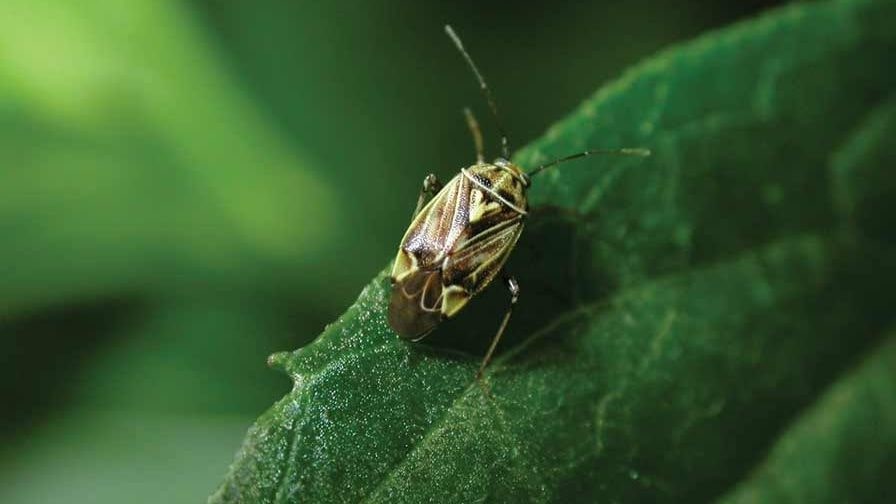

Not as harmful as aphids, Lygus plant bugs are tiny insects with X-shaped wings. They also love to feast on plant sap.
The most noticeable effects they can do on your cosmos are spots on the leaves and stems.
Treatment: Safe to say, these insects aren’t that much of a threat to your cosmos compared to aphids. If you really want to get rid of them though, then natural oil spray also works effectively against them.
Common Diseases on Cosmos
Cosmos can unfortunately be infected with diseases caused by fungi and bacteria. Fungal infections like fusarium wilt and powdery mildew are highly common among cosmos as well as bacterial infections like bacterial wilt.
Listed below are their characteristics and the first thing you should do to treat them.
Bacterial Wilt on Your Cosmos
Bacterial wilt is a common disease that first attacks the base stem of your cosmos—wilting it and leaving a brownish mark—and slowly makes its way towards the upper stems and leaves then finally on to the root.
Treatment: Unfortunately, there is no way to treat this disease other than removing the entire plant itself, as there’s no cure for it. Hopefully, with quick action, you’ll prevent the disease from spreading to your other remaining cosmos.
Fusarium Wilt on Cosmos
Another deadly disease to your cosmos, fusarium wilt is a fungal infection that causes the leaves and stems of your cosmos to slowly turn yellowish, starting from the veins and then spreading outwards.
Eventually, the affected plant will completely wilt off and die. Make sure that you immediately dig up the plant and remove it at the first signs of fusarium wilt to prevent it from spreading to your other plants.
Treatment: Unfortunately, there’s no reliable way to cure fusarium wilt once it infects a plant. Dig up the dying plant and don’t use it as compost.
Make sure to destroy it completely before throwing it into the trash.
Powdery Mildew on Cosmos
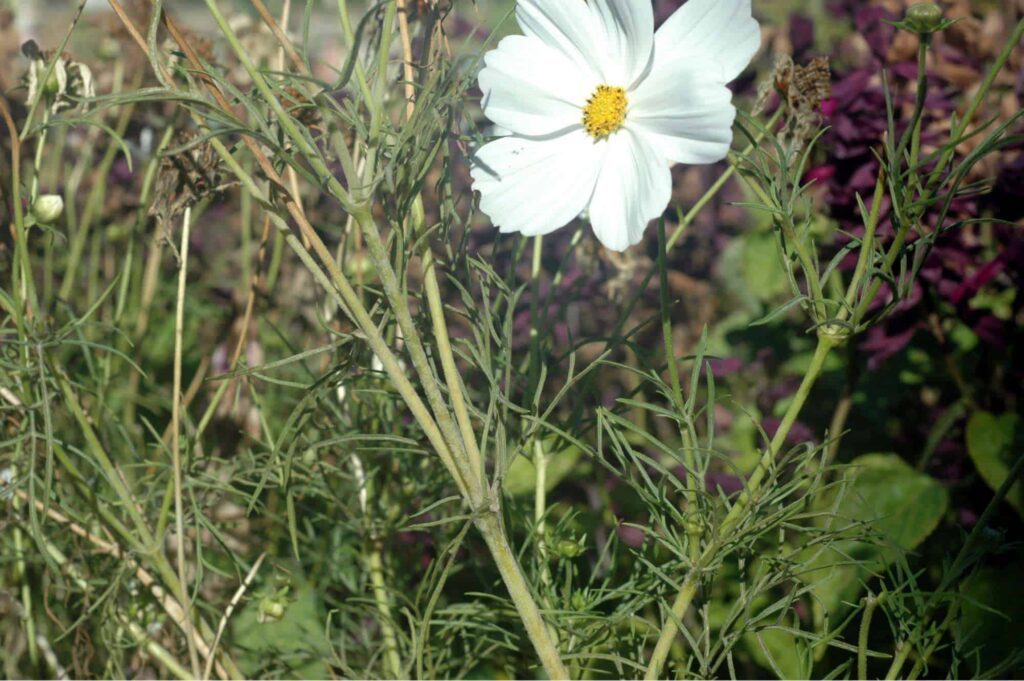

A mild form of fungal infection, powdery mildew are fungi spores carried by the wind which settle on the base of the leaves of your cosmos. Once settled, these fungi will begin appearing as white powdery substances covering the leaves of your plant.
Because they block the ability of the leaves to collect sunlight, they can cause the leaves to slowly wilt off and die.
Treatment: The best treatment to powdery mildew is to keep your cosmos well-ventilated and mostly dry throughout the day to prevent the fungi from producing more spores. You can also rely on fungicides to kill off the fungi quickly.



